FIREBAUGH, Calif. – Heat rises in waves from a vast melon orchard at Del Bosque Farms in San Joaquin Valley where dozens of farmworkers are harvesting cantaloupes. Temperatures will top 100 degrees Fahrenheit before this July workday is done.
“This heat is no joke,” said Rigoberto Robla Garcia, loading boxes of melons on a pallet. Garcia wears a wide, straw hat over a baseball cap and a long-sleeved, purple sweatshirt.
“You have to keep yourself covered and drink a lot of water to protect yourself,” he said. “People can pass away from this heat, you know?”
Indeed, California’s long, hot summers can be deadly for people who make their living laboring in the sun. The state’s Mediterranean climate is great for the 400 different types of commodities grown here, but hard on the humans who harvest them.
And climate change is making matters worse, said Marc Schenker, a professor of public health sciences and medicine at the University of California, Davis, and director of the Western Center for Agricultural Health and Safety. Exposure to pesticides was the number one health issue for farmworkers when Schenker founded the agricultural safety center 30 years ago, but heat exposure is now the primary concern.
“It’s been years since an agricultural worker has died from pesticide exposure,” Schenker said from his office in Davis. “Agrochemicals have become less of a health problem because they are used more efficiently now, and many of the most hazardous agents have been banned. But temperatures are getting hotter and more extreme, and that puts people doing hard labor outdoors particularly at risk.”
Video: Beating the heat in California’s Central Valley
As temperatures rise, farmworker safety is become more and more of a concern. UC Davis is working with growers to educate workers and foremen about avoiding heat illness.
Preventable deaths
California passed the nation’s most stringent heat laws in 2005 after four farmworkers died from heat exposure in the field. The laws say growers must provide workers adequate water, shade and rest breaks. But over the following three years, heat stress still killed six farmworkers, including 17-year-old Maria Isabel Vasquez Jimenez who collapsed in 2008 while working in a Central Valley vineyard in 95-degree heat. She was two months pregnant.
Jimenez’ death sparked public outcry and generated new awareness of the plight of the mostly Latino immigrants who harvest our food while facing health and food insecurity issues of their own. California’s Division of Occupational Safety and Health (Cal-OSHA) ramped up field inspections, adopted more stringent heat-stress standards and expanded employer training.
From 2014 to 2016, heat-stress fatalities among farmworkers fell to one per year. No farmworker heat-stress fatalities have been recorded this year.
“Statistics aren’t a perfect indicator because sometimes heat stress is an indirect cause of death,” Schenker said. “But I will say that California has the most progressive heat-stress prevention standards in the country, and that helps.”
Workers have only 20 minutes to seek treatment for heat stress before deadly heat stroke can set in.

Measuring physiological risks
Prior to this, what we knew about the risks of heat exposure was based on tests with military personnel and firefighters. Farm labor is a much different activity; it involves lower-level intensity for much longer periods of time.
– Diane Mitchell
The Western Center for Agricultural Health and Safety recently completed the California Heat Illness Prevention Study, which measured—for the first time—the physiological effects of doing inland valley field work in the hot sun.
“Prior to this, what we knew about the risks of heat exposure was based on tests with military personnel and firefighters,” said Diane Mitchell, a staff research associate with the center who worked with Schenker on the groundbreaking study. “Farm labor is a much different activity; it involves lower-level intensity for much longer periods of time.”
The team measured hundreds of workers on dozens of farms over three years. Researchers are still crunching numbers, but one thing is clear: when temperatures climb above 98.6 degrees Fahrenheit, your body needs help cooling down.
“At that point, your body can no longer regulate itself,” Mitchell said. “You need to rest, drink water and take a break from the sun.”
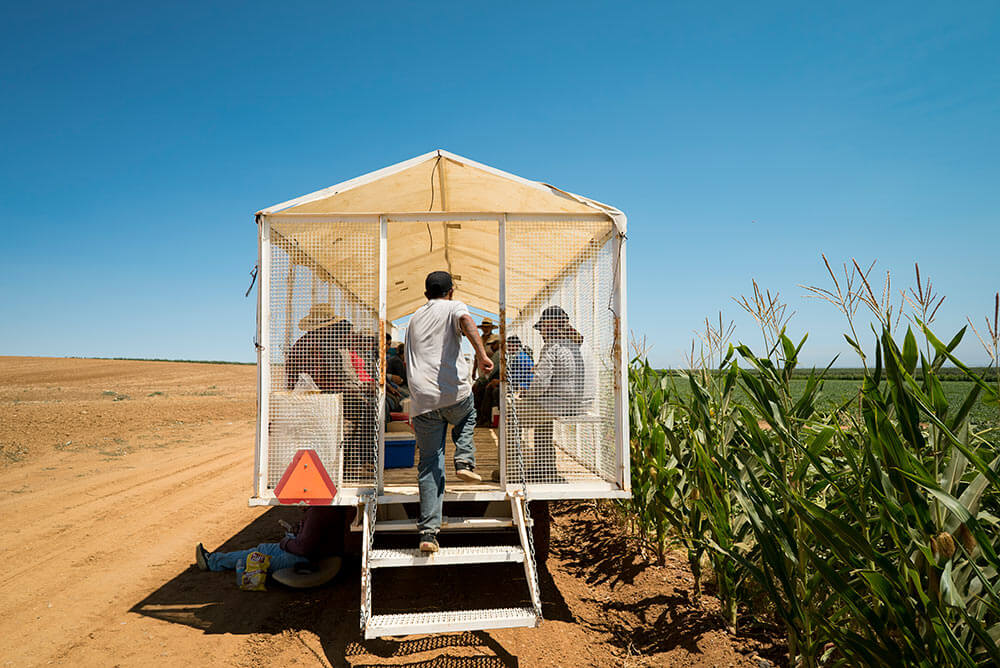
Water, rest and shade are the central tenants of the Cal-OSHA standards, which UC Davis scientists helped design. The laws require employers to provide at least one quart of fresh water per worker per hour, and encourage them to drink it. They must provide enough shade for the entire crew and a mandatory break every four hours.
When temperatures reach 95 degrees Fahrenheit, supervisors and workers are trained to be extra vigilant for symptoms of heat stress like dizziness, nausea, headache and confusion.
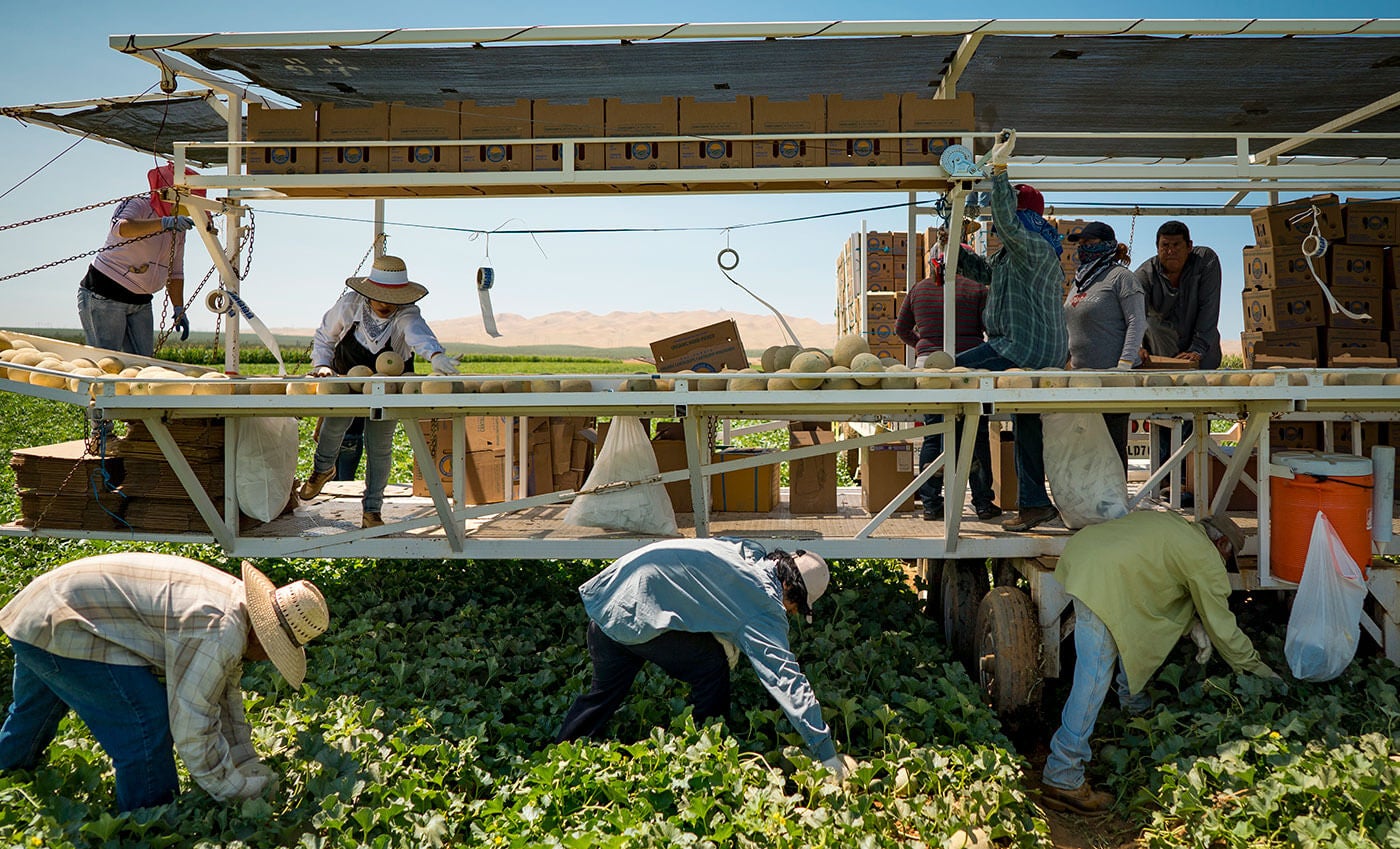
Cultural challenges
Do social behaviors and cultural norms play a role in farmworker safety? Yes, according to focus groups the agriculture safety center consulted as part of the team’s heat-illness study. Schenker and his colleagues are now addressing those cultural myths—such as the false notion that cold water can harm the body in hot temperatures.
“We also discovered gender differences we can incorporate into our training,” Mitchell said. “We learned that women, in general, were more aware of their bodies’ early symptoms of heat exposure than men.”
Back at Del Bosque Farms in Firebaugh, Rigoberto Garcia
Still, Garcia says many workers don’t make water a priority.
“Why? I don’t know, honestly,” he said. “Probably pride. They’re trying to prove something. The job’s gotta get done somehow.”
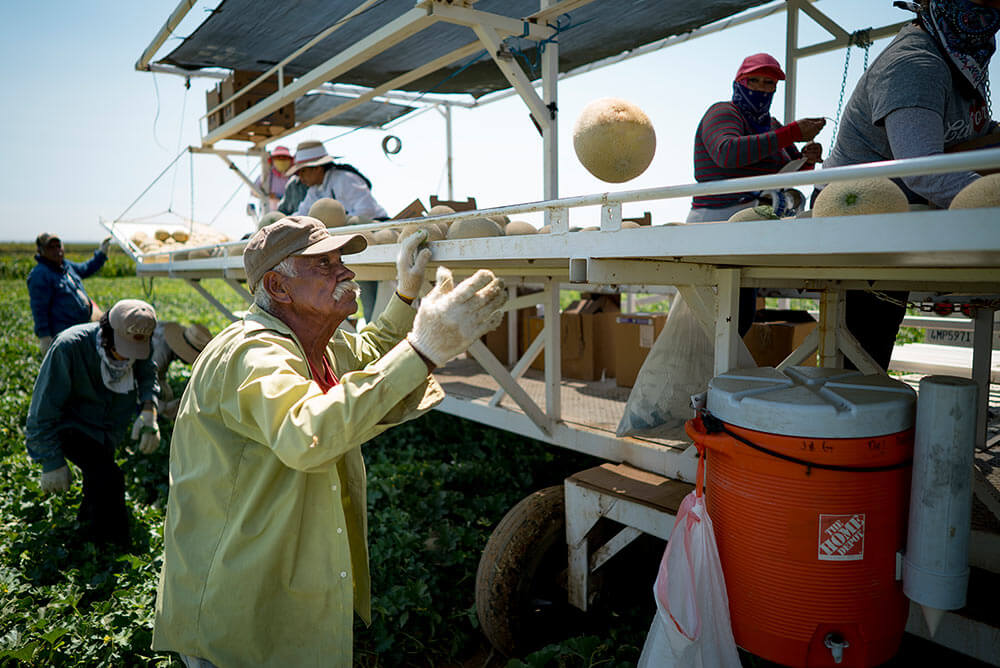
Humans versus sun
Heat stress is a very dangerous thing.Especially for people who are starting to work on the first day of July. It’s hot. If they haven’t been working in the field, it can be quite dangerous.
– Joe Del Bosque
Not all California farmers blame climate change for the state’s rising temperatures. But they all seem to agree on one thing: harvesting California’s specialty crops is hard, sweaty labor and farmworkers need protection.
“Heat stress is a very dangerous thing,” said Joe Del Bosque, who farms almonds, asparagus and cherries along with the melons workers are harvesting today. “Especially for people who are starting to work on the first day of July. It’s hot. If they haven’t been working in the field, it can be quite dangerous. Once they’re acclimated and if they have been trained properly from the beginning to prevent heat illness, they can work safely.”
Del Bosque applauds the regulatory push for farmworker heat-stress safety.
“There have been a lot of changes—some of them required by law, some of them voluntary—but all of them meant to create a safer workplace for our people,” he said.
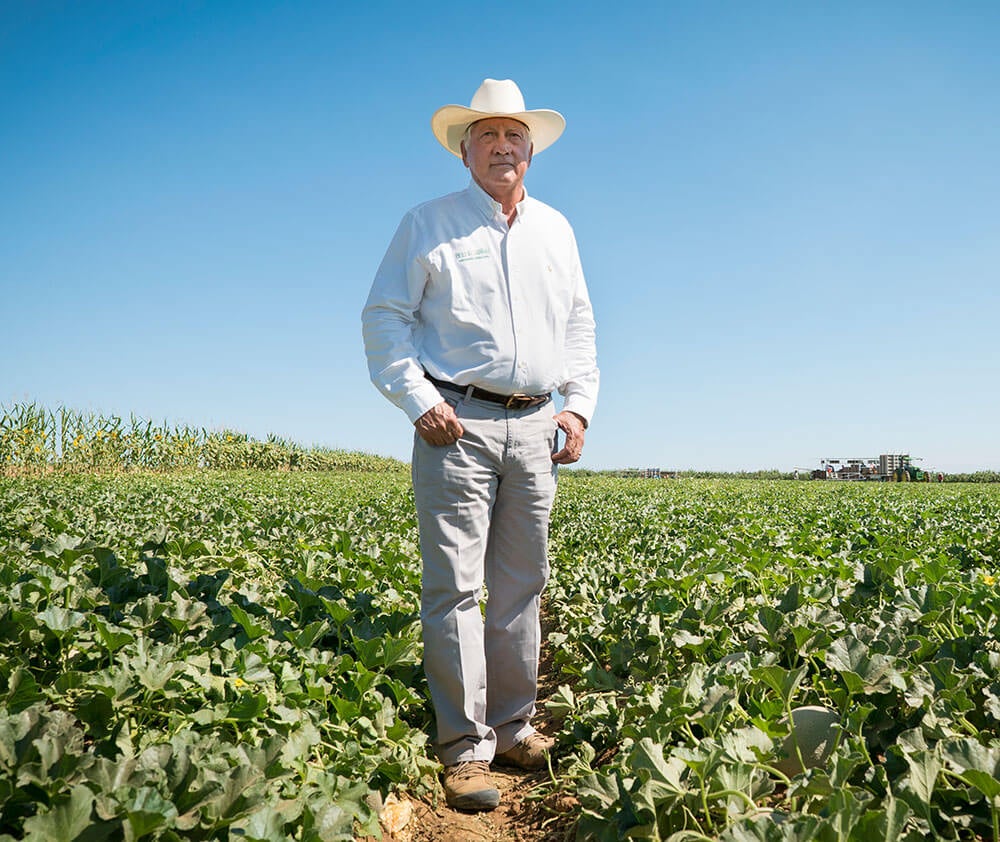
Schenker said it will be take a group effort to protect farmworkers in California’s rising heat. He is encouraged by the increase in labor-friendly farming methods like night-harvesting in vineyards. Schenker retires as center director later this year, and will continue to advocate for farmworker safety.
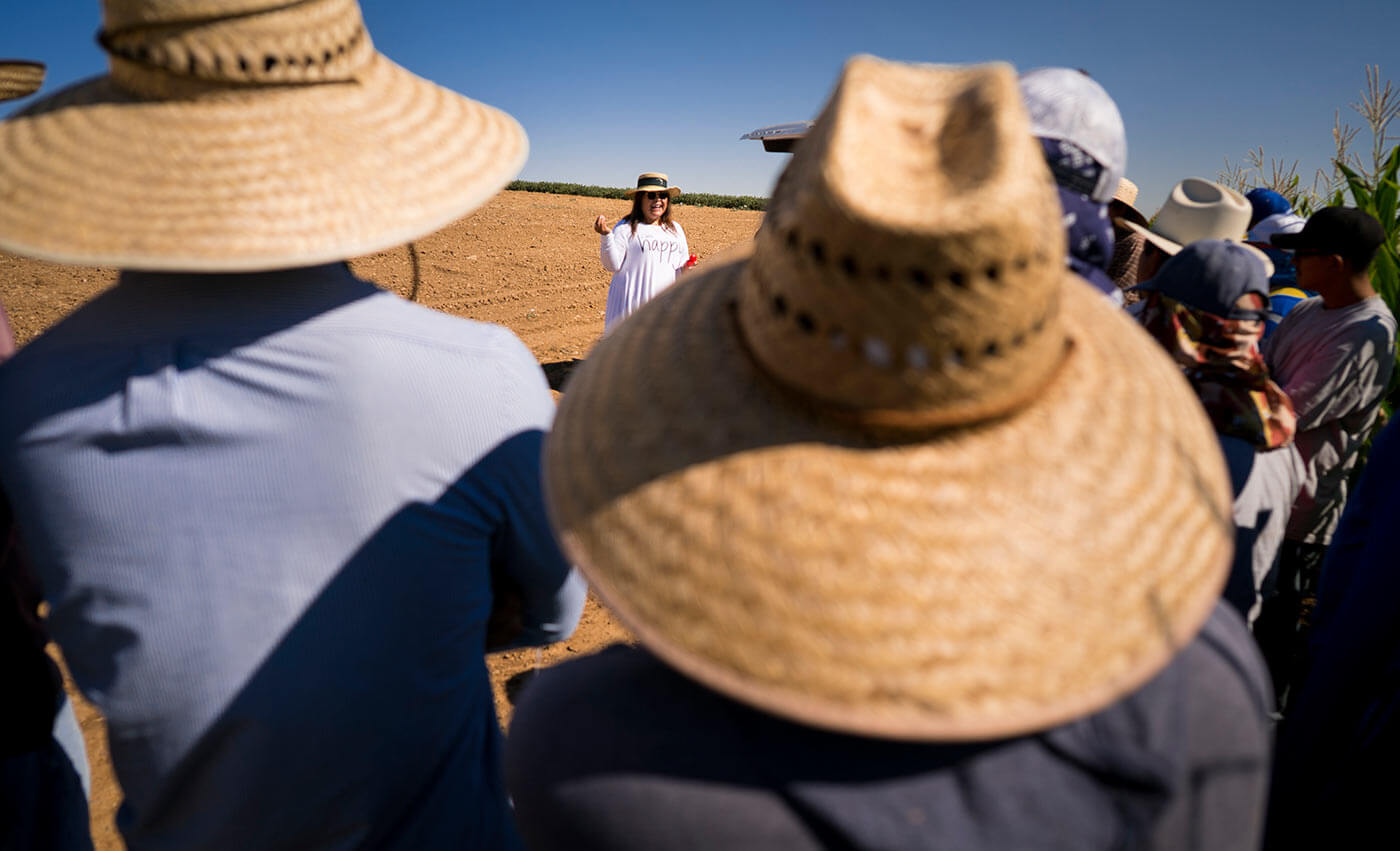
“The people growing our food are not expendable,” Schenker said. “They are an integral part of the fabric of the community.”
Speaking of work, these 800 acres of melons are not going to pick themselves. Garcia adjusts his hat, drops to his haunches and plucks a fresh melon from the vine.
